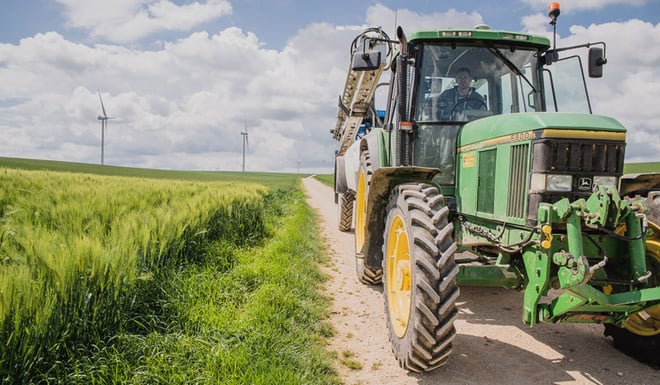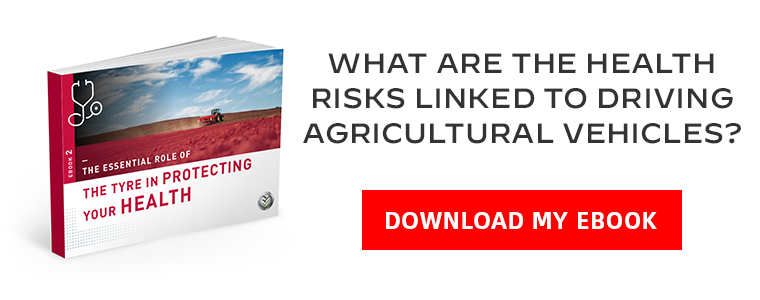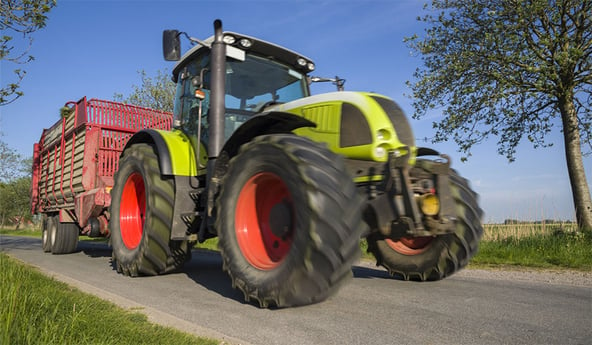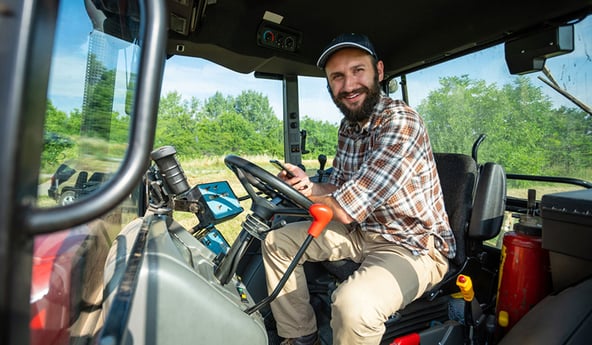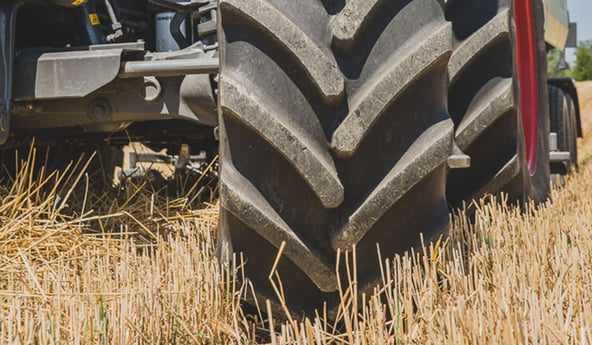In the agricultural world, one out of three accidents involves agricultural machinery (rollovers, activities carried out underneath electrical wires, road accidents inter alia..). More specifically, each year, accidents involving vehicle overturning cause 20 to 30 deaths.
Tractor rollovers occur following a loss of contact between ground and tyre. The notion of ground/tyre contact differs depending on the type of ground.
On the road, four factors determine the liaison with the ground:
- The tractor mass applied to the tyre
- The indentation* of the rubber which depends on the roughness of the road surface
- The tyre’s adherence
- The form and distribution of the lugs
These last three factors depend on the quality of the rubber and the tyre design as a whole. In the fields, as the soil is looser, the connection with the ground is made possible by the penetration of the tyre lugs into the soil.
* Indentation: this is the capacity of the rubber in the tyres to change shape when in contact with the surface irregularities to fit the contours of the ground, which is an essential capacity to wedge the wheel and prevent it from slipping.
What is the role of the tyre in tractor overturning?
There are multiple causes of loss of ground/tyre contact:
- First of all, wear to the tyre tread, due to misalignment or unsuitable inflation pressure, may lead to loss of grip on the road.
- Wear to the sidewalls increases the risk of tyre explosion and therefore immediate loss of contact with the ground.
- An excess load transfer may also lead to overturning. The load must not exceed 3 tonnes.
- Poor brake control (brakes in bad condition, excess load…) can result in the tractor veering off the road.
Front axle suspension and a high-performance braking system help improve the comfort and safety of our equipment"
Modifying the tractor’s centre of gravity pmay also result in overturning. When working on a steep incline or when the maximum diameter of the wheel is more than 2 meters, the centre of gravity moves upwards and the tractor becomes less stable and may roll over.
In addition to tyre quality, good control of tyre adjustments is essential to limit the risk of loss of grip.
On top of the direct matter of safety linked to rollovers, other more pernicious dangers may affect the farmer. Thousands of hours spent behind the tractor wheel can effectively lead to damage to the driver’s vertebral disks.
If you would like to find out more about this revolutionary technique which has an impact on the farmer’s health and safety, download this free white paper:
Most people who read this article have also read some of the following articles:
This information is intended only to make you aware of the technical and functional aspects of agricultural tires and their use. It does not allow you to make a judgment or a definitive conclusion on a given problem. Only your agricultural tire expert is able to make a technical assessment and take a final decision, case by case.
Leave a
commentary
Your email address will not be published.
Required fields are indicated with *


